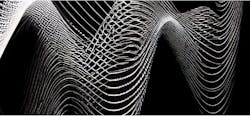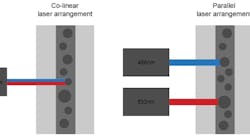Polarization is a fundamental property of light, crucial in optics and various applications.
It involves the orientation of the electric field vector in a light wave as it propagates.
- Reflective Polarizers:
- Transmit desired polarization while reflecting others.
- Examples: Wire grid polarizers, Brewster’s angle-based polarizers.
- Applications: LCD displays, optical instruments.
- Dichroic Polarizers:
- Rely on differential absorption of light with varying polarizations.
- Used in photography, optical filters, and scientific instruments.
- Birefringent Polarizers:
- Utilize birefringence in certain crystalline materials.
- Design for effective separation or manipulation of polarizations.
- Waveplates:
- Optical devices modifying polarization without significant beam deviation.
- Types include quarter-wave plates and half-wave plates.
Polarization of light is a fundamental property that plays a crucial role in various optical technologies and applications. It refers to the orientation of the electric field vector associated with a light wave as it propagates through space. The manipulation of optical polarization is of great significance in fields such as optics, telecommunications, photography, and many other areas of science and technology. To better understand this concept, it’s essential to delve deeper into the tools and techniques used for manipulating polarization.
Polarizers are optical devices designed to selectively transmit or block certain polarizations of light while allowing others to pass through. These devices are indispensable in controlling the polarization state of light for a wide range of applications. Polarizers can be broadly categorized into three main types: reflective polarizers, dichroic polarizers, and birefringent polarizers.
1. Reflective Polarizers:
Reflective polarizers are a class of optical components that transmit the desired polarization of light while reflecting the remaining components. One common example of a reflective polarizer is the wire grid polarizer. This type of polarizer consists of numerous thin, closely spaced wires that are aligned parallel to each other. The operation of wire grid polarizers is based on the principle that light polarized along the orientation of the wires is reflected, while light polarized perpendicular to the wire orientation is transmitted. This mechanism allows for the separation of polarizations, making wire grid polarizers valuable in various optical applications.
Another approach used in reflective polarizers is based on Brewster’s angle. Brewster’s angle is a specific angle of incidence at which only s-polarized light (light polarized parallel to the plane of incidence) is reflected, while p-polarized light (light polarized perpendicular to the plane of incidence) is transmitted. This results in the reflected beam being exclusively s-polarized, and the transmitted beam containing both s- and p-polarized components. Reflective polarizers are commonly used in applications where the rejection of a specific polarization state is essential, such as in LCD displays and optical instruments.
Dichroic polarizers are optical components that rely on the differential absorption of light with varying polarizations. They are typically made from materials that exhibit anisotropic absorption properties. These materials selectively absorb light of one polarization while allowing light of the orthogonal polarization to pass through. Dichroic polarizers are widely used in photography, where they help enhance the quality of images by reducing glare and unwanted reflections. They are also used in optical filters and various scientific instruments.
3. Birefringent Polarizers:
Birefringent polarizers utilize the phenomenon of birefringence, which occurs in certain crystalline materials. Birefringence is the property of a material to have different refractive indices for light polarized in different directions. When light passes through a birefringent material, it experiences a phase delay between its orthogonal polarization components. By carefully selecting the material and geometry of a birefringent element, it is possible to design polarizers that can separate or manipulate polarizations effectively.
In addition to polarizers, another critical optical component for manipulating polarization is the waveplate. Waveplates, also known as retarders, are optical devices that modify the polarization state of light without significantly attenuating, deviating, or displacing the beam. They work by introducing a phase difference between the orthogonal components of polarization. Ideal waveplates are designed to perform this function while preserving the intensity and direction of the incident light.
4. Waveplates are available in various types, including quarter-wave plates and half-wave plates, each with unique properties and applications. By carefully selecting the appropriate waveplate, you can achieve specific polarization transformations. These transformations can include converting linearly polarized light into circularly polarized light or vice versa, as well as rotating the orientation of linear polarization.
In summary, the manipulation of optical polarization is a critical aspect of optics and photonics. Polarizers, such as reflective, dichroic, and birefringent polarizers, are essential tools for controlling the polarization of light. Waveplates, on the other hand, play a crucial role in modifying existing polarization states without significant loss of intensity or deviation of the light beam. Understanding and utilizing these optical components is fundamental in a wide range of applications, from enhancing image quality in photography to optimizing the performance of optical devices in telecommunications and scientific research.







